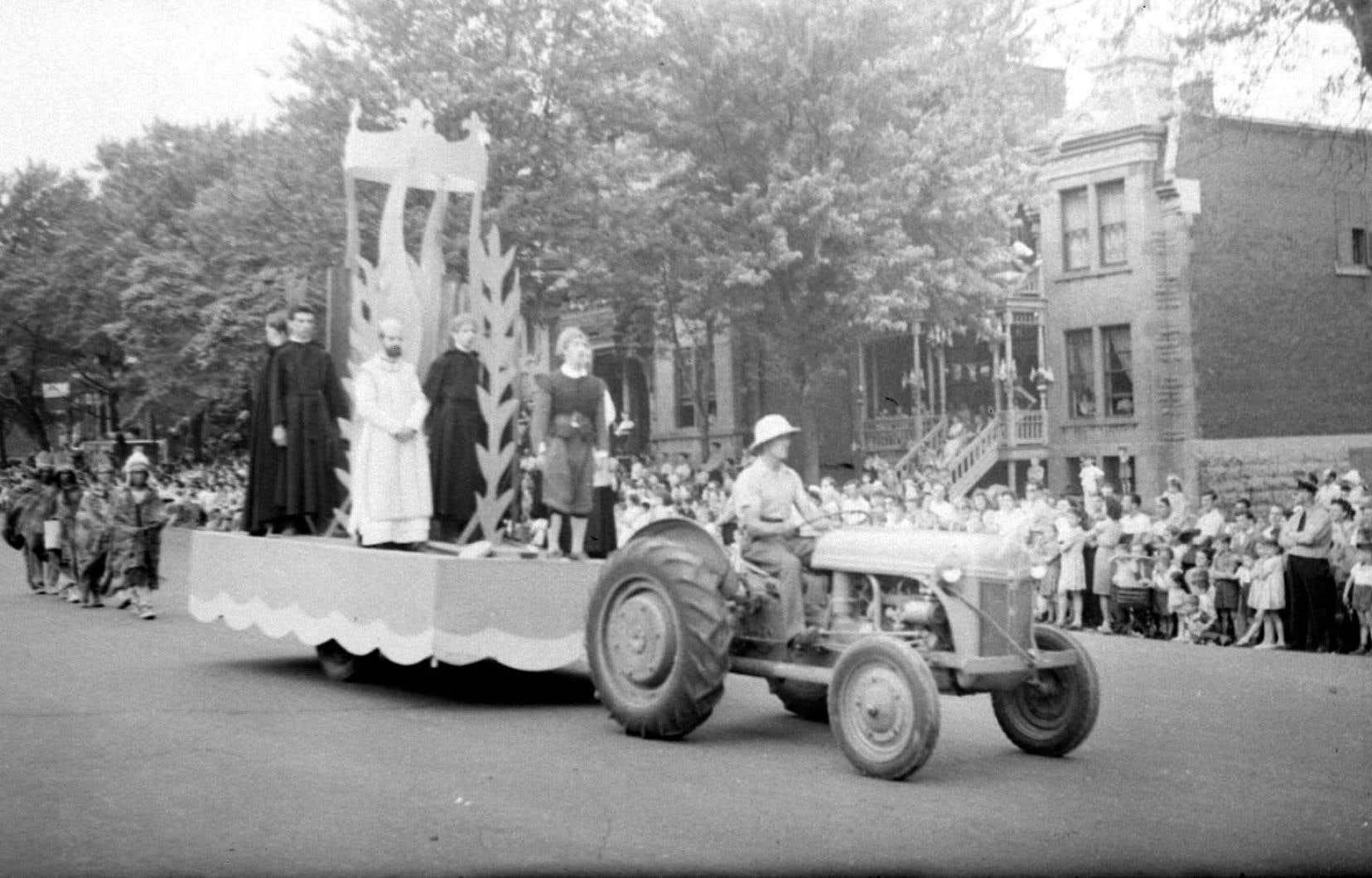The National Day Committee hopes to have Saint-Jean Day, its parade and its instigator, Ludger Duvernay, recognized as part of Quebec’s intangible heritage. To support its request, the organization asked the art historian and ethnologist Diane Joly to draw up a report relating the history of the festival.
The “festive character” of the Saint-Jean celebrations gives them this heritage value, argues Ms.me Pretty. “I show that this is an important historical event for Quebecers. And not just the parade. »
It was in the gardens of the lawyer John McDonnell, located in the Faubourg Saint-Antoine of Montreal (now part of Windsor Station), that the first celebration of Saint-Jean-Baptiste as a national holiday for French Canadians took place on June 24, 1834.
On the initiative of Ludger Duvernay, who was then director of the newspaper The Minerva, the party was first conceived as a banquet to support the ideals of the Parti patriote. Participating in particular were Louis-Joseph Papineau and George-Étienne Cartier, around Ludger Duvernay. “During this banquet, says Diane Joly, there were 40 toasts, 25 of which were of a political dimension, in connection with the ideas of the Patriote Party. It is also said that following the banquet, the patriots recognized each other by greeting each other with a “hello Jean-Baptiste”.
“It was Ludger Duvernay who called the first banquet, in 1834, during which it was decided that this celebration would be held every year, in honor of French Canadians. This was done for three years, not just in Montreal. It spread very quickly, especially among patriots,” explains the historian. The party quickly made its way into the villages won over by the ideals of the group, in the Richelieu valley, around Saint-Eustache, near L’Assomption, on the South Shore or in the Richelieu valley. At the same time, Ludger Duvernay formed the ancestor of the Saint-Jean-Baptiste Society (SSJB), a society he then called “Help yourself and heaven will help you”.
Historians agree to associate the creation of the holiday with the failure of the 92 resolutions presented in February of the same year by the Patriote Party. Written by Louis-Joseph Papineau, they demand increased powers for the Legislative Assembly, continues Mr.me Pretty. This impasse will later also be linked to the rebellions of the patriots of 1837-1838.
Secular and religious duality
For a long time, Saint-Jean-Baptiste Day, which occurs shortly after the summer solstice, was celebrated in France. Here, it was associated with celebrations around the opening of swimming in the river, considered dangerous before that date. The party therefore already had a secular side and a religious side. This duality, which marked the feast of Saint John here until the 1960s, had already existed in Europe for a long time.
“In France, despite pressure from the Church, Saint-Jean remains a popular festival while being part of the great Christian religious festivals with a liturgical ceremony, a procession in public squares and a blessing of fires and stakes by the priest. The Church persists in restricting the feast to a religious dimension. However, the Concordat of 1801 between Pope Pius VII and Napoleon Bonaparte allows the celebration to retain its popular character,” writes Diane Joly in her report.
From its first celebration as the anniversary of French Canadians, the celebration was accompanied by a parade. “Heirs to the practices of their ancestors, the guests met in another place, then went together to the banquet singing the praises of Saint John,” we read again.
And in its subsequent forms, the National Day parade was done in two parts. “First, the members marched to the church, where there was mass. Then they came out of mass and there was a patriotic parade,” explains Diane Joly. The SSJB campaigned very early for the holiday to be closed throughout Quebec.
“In the early 1860s, many businesses, both French and English, closed during the passage of the parade. Some companies give their employees leave, at least for a few hours, so that they can take part in the parade or attend it,” writes the ethnologist.
The parade of Saint-Jean-Baptiste is gaining momentum at the beginning of the XXe century. In 1926, it brought together 35 allegorical floats and attracted a crowd of 250,000 people. Until 1964, a blond and curly child represented Saint John the Baptist, accompanied by a sheep, on an allegorical float, but this practice was disputed by supporters of an entirely secular parade.
Stormy celebrations of 1968-1969
June 24, 1968 is the eve of federal elections. Pierre Elliott Trudeau, who will be elected prime minister, officially participates in the Saint-Jean-Baptiste celebrations, despite the opposition of the Rassemblement pour l’indépendance nationale and its leader, Pierre Bourgault. Demonstrations against the presence of Pierre Elliott Trudeau at the festivities lead to strong arrests. We will baptize the event on the Monday of the truncheon.
The following year, another violent episode occurs in the parade. The allegorical chariot bearing the statue of Saint John the Baptist is overthrown, and the latter is decapitated. In an essay titled John the Baptist beheaded, sociologist Geneviève Zubrzycki sees it as the symbol of the break between the secular and the religious in Quebec. During the twenty years that followed, there would be no more Saint-Jean-Baptiste parades in Montreal.
In 1990, the parade finally resumed service on the theme “30 years of quiet power”. The sheep reappears there, but this time it is a sheep of six tons of wood and steel which represents the salvation of the French. The national fervor is then, according to Mme Joly, revived by the failure of the Meech Lake constitutional negotiations. Since then, the traditional Saint-Jean-Baptiste parade has been canceled three times: in 2001 due to rain, in 2004 following budget cuts, and in 2020 due to the pandemic.
The request for registration of the national holiday, its parade and Ludger Duvernay was forwarded to the Ministry of Culture and Communications of Quebec last fall by the SSJB.
